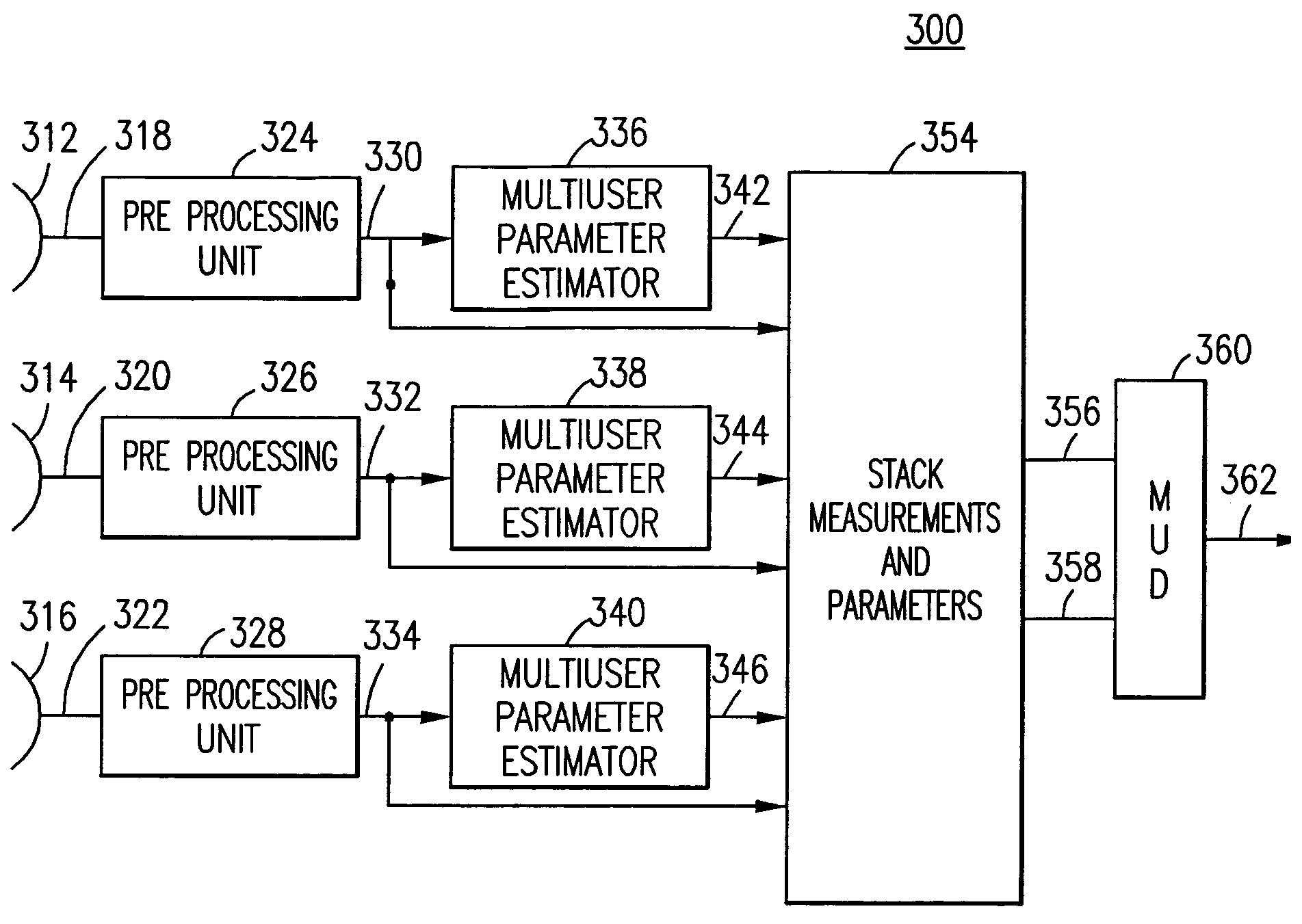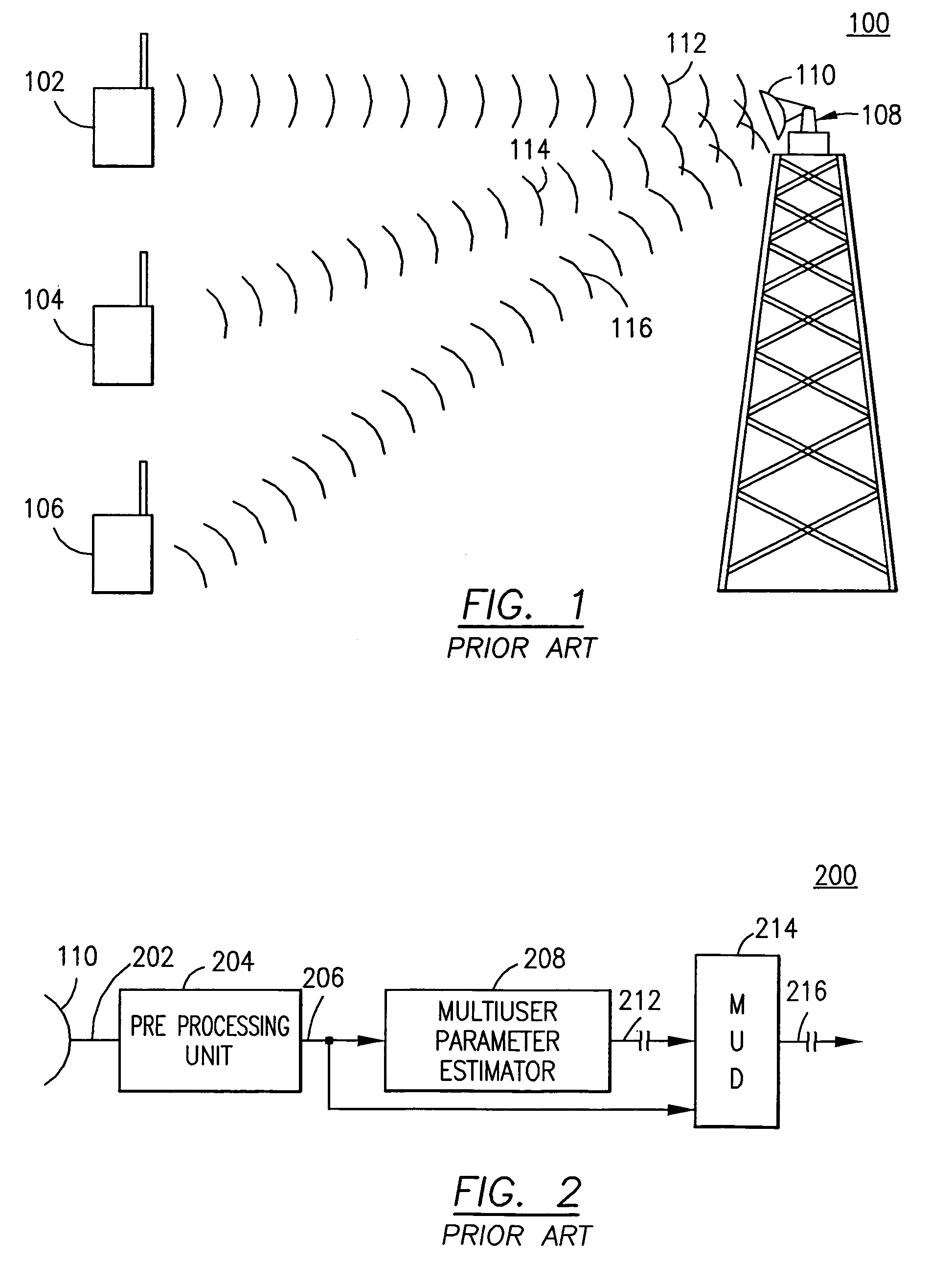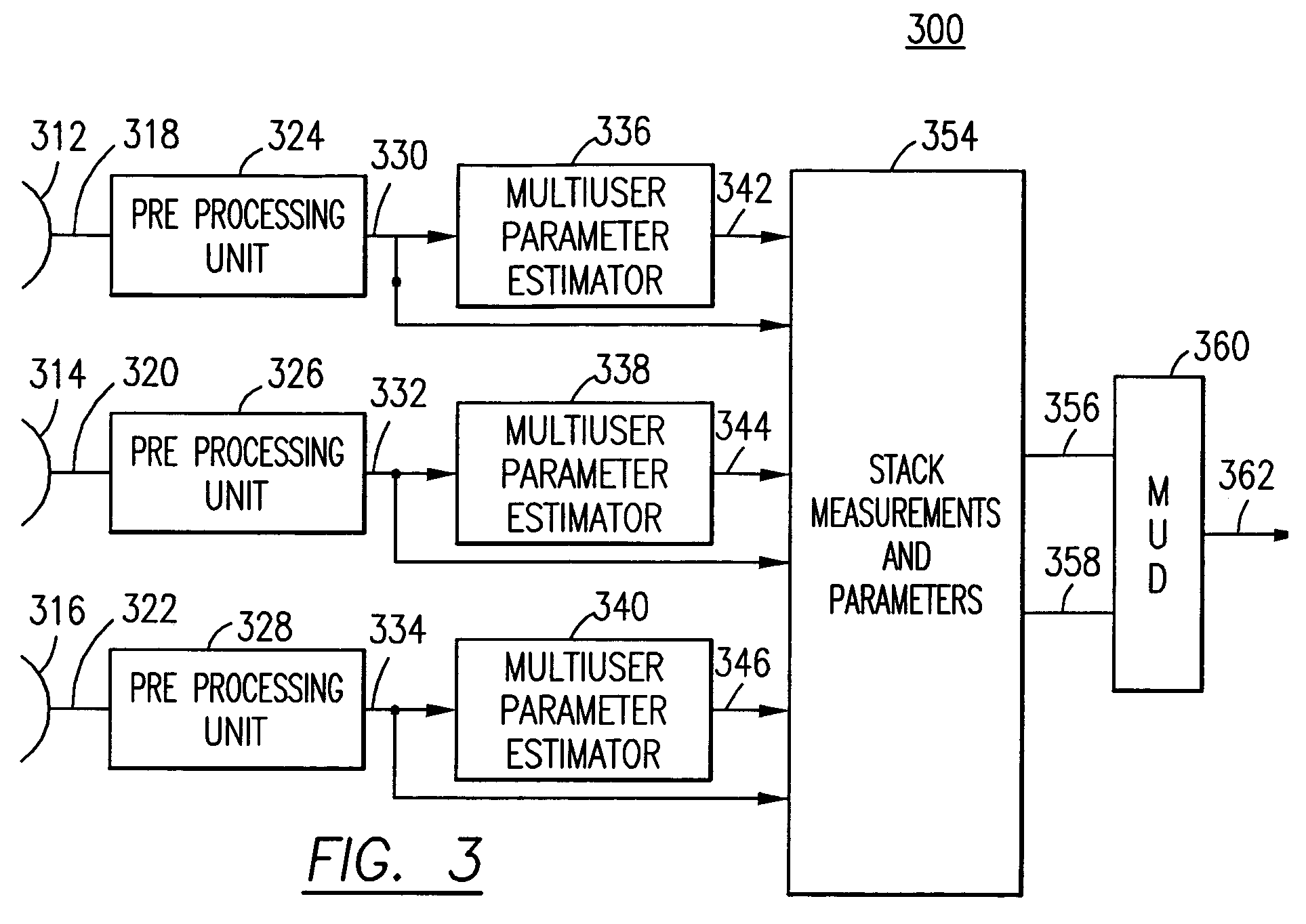Receiver with multiple collectors in a multiple user detection system
a detection system and receiver technology, applied in the field of digital communications, can solve the problems of significant degradation of reception quality, inability of current state of the art receivers to detect and decode the information associated with each user under conditions, and not attractive options for telecommunication companies, so as to increase the total number of users packed into a given channel, increase the overall throughput, and increase the total number of users
- Summary
- Abstract
- Description
- Claims
- Application Information
AI Technical Summary
Benefits of technology
Problems solved by technology
Method used
Image
Examples
Embodiment Construction
[0027]The present invention provides a multiuser detection process and apparatus that is capable of pulling apart signals in heavy interference. The number of users that can be packed into a MUD-based multiple access system is a function of the number of independent dimensions over which the set of signals is spread (the dimension of the span of the set of signals). The total number of users can be increased if more measurements of the received signal prior to the definition of the multiuser detection algorithm parameters and the different collections of signals are carefully combined as one signal for the purposes of MUD processing. In some cases, only a very small separation of collectors is required.
[0028]The invention can offer two improvements. In one scenario, any given multiuser detector known to offer good performance in a given interference-ridden scenario can be replaced by a lower complexity multiuser detector that takes short cuts in the detection algorithm relative to t...
PUM
 Login to View More
Login to View More Abstract
Description
Claims
Application Information
 Login to View More
Login to View More - R&D
- Intellectual Property
- Life Sciences
- Materials
- Tech Scout
- Unparalleled Data Quality
- Higher Quality Content
- 60% Fewer Hallucinations
Browse by: Latest US Patents, China's latest patents, Technical Efficacy Thesaurus, Application Domain, Technology Topic, Popular Technical Reports.
© 2025 PatSnap. All rights reserved.Legal|Privacy policy|Modern Slavery Act Transparency Statement|Sitemap|About US| Contact US: help@patsnap.com



